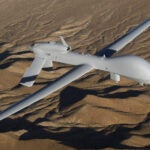
Undersecretary of the Army Patrick Murphy is looking for efficiencies in the way the service does business to redirect wasted funding to near- and long-term readiness.“Every dollar saved through efficient business practices is a dollar we can spend ensuring our Army never faces a fair fight,” Murphy said Friday at the New America Foundation in Washington, D.C.The Army is not a publicly traded business, but its leaders can learn from sound business management practices perfected in the private sector, Murphy…

 By
By 











